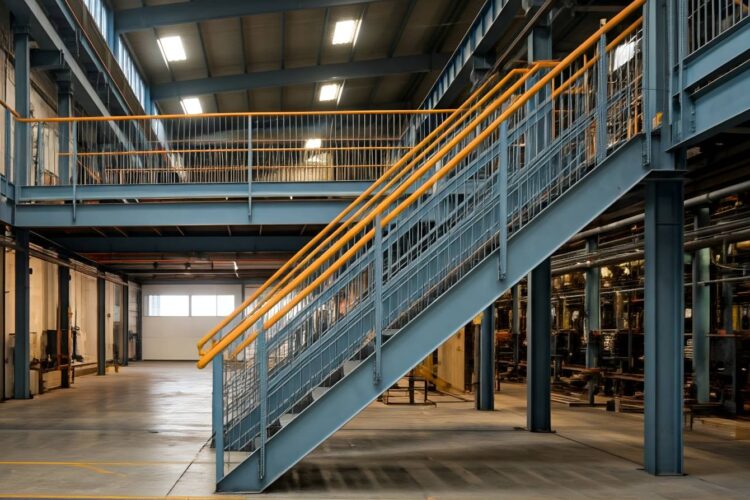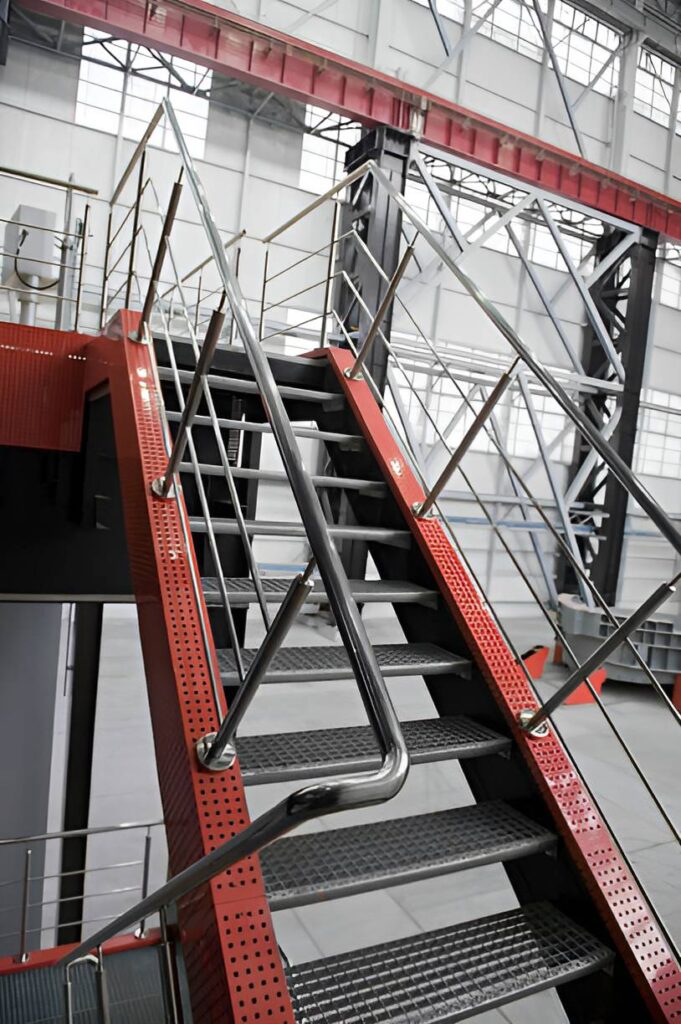
From Installation to Maintenance: A Complete Guide to Mezzanine Handrail Systems
Mezzanine floors are a valuable asset for businesses seeking to maximize their space utilization. However, safety should always be the top priority. This is where well-designed and properly installed handrail systems come into play. Handrails provide essential protection for workers and visitors, preventing falls and creating a secure working environment. This guide will walk you through the complete process, from installation considerations to ongoing maintenance.
1.Installation Considerations-
- Code Compliance: Ensure your handrail system complies with all relevant building codes and regulations. This typically includes requirements for height, spacing, and strength.
- Material Selection: Choose materials that are durable, resistant to wear and tear, and aesthetically pleasing. Common options include metal (stainless steel, aluminum), wood, and glass.
- Installation Method: Proper installation is crucial for safety and longevity. Engage experienced professionals to ensure the handrail is securely fastened to the mezzanine structure.
2.Types of Handrail Systems-
- Vertical Bars: A classic and cost-effective option, often used in industrial settings.
- Cable Railing: Provides a modern and sleek look, offering unobstructed views.
- Glass Panels: Create a contemporary and open feel, while still providing a safety barrier.
- Wood Railings: Offer a warm and natural aesthetic, suitable for offices and retail spaces.
3.Safety Features-
- Handrail Height: Maintain a consistent handrail height throughout the mezzanine level, typically between 34-38 inches (86-97 cm) above the walking surface.
- Midrails: Consider incorporating midrails for additional safety, especially for mezzanines with higher elevations.
- Non-Slip Surfaces: Ensure handrails have a non-slip surface to prevent slips and falls.
- Regular Inspections: Conduct regular inspections of the handrail system to identify and address any damage or wear and tear.

4.Maintenance and Repair-
- Regular Cleaning: Keep the handrails clean and free from debris to maintain their appearance and functionality.
- Tightening Loose Connections: Regularly check for loose bolts, screws, or other connections and tighten them as needed.
- Corrosion Prevention: For metal handrails, implement measures to prevent corrosion, such as applying protective coatings or using corrosion-resistant materials.
- Damage Repair: Promptly repair any damage to the handrail system to ensure continued safety.
5.Choosing the Right Contractor-
- Experience: Select a contractor with experience in installing and maintaining mezzanine handrail systems.
- Safety Record: Prioritize contractors with a strong safety record and a commitment to safe work practices.
- Quality Materials: Ensure the contractor uses high-quality materials and adheres to industry best practices.
- Warranty and Maintenance: Inquire about warranty coverage and ongoing maintenance options.
By following these guidelines, you can ensure that your mezzanine handrail system provides both safety and aesthetic appeal, enhancing the functionality and value of your mezzanine floor.
Remember: Safety should always be the top priority when designing and implementing mezzanine handrail systems. Regular inspections and maintenance are crucial to ensure the long-term safety and functionality of your system. Contact us today to discover how we can help create a future-ready workspace for your team.



